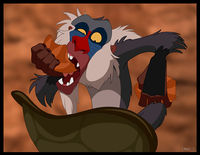Spring 2012: Ajoke Jumoke Williams
Contents
Introduction
Hey, I'm Ajoke(not pronounced -a-joke) Williams and I'm a senior in Biology. I took 20.309 my sophomore year and it was a frightening experience;mostly because the class was really hard for me. Nevertheless the material was awesome. Because of 20.309 I received my first exposure to optics and matlab. Although 20.309 only touched on geometric optics I found thinking about light and its propagation through space and matter exciting. Fast forward to my senior fall year and I found myself taking a Modern Optics class and working in a UROP where I mostly code in matlab, which is pretty ironic since geometric optics was not my friend my sophomore year and I have never before considered myself a "programmer". My expectations for this class are to learn more about optics and how optical components are interfaced with electrical and digital components to make robust biological measurement/imaging systems, to improve my programming skills and learn how to build a PCB board. Right now I think I'm leaning towards working on the STORM imaging method for a final project.
Lab 1: Optical Trapping: UI and Instrument Control
Diagram of Electronic Control System
A.
B.
C.
D.
Instruments/Code
Matlab : programming language
DAQ –
Piezoelectric Stages -
Bead size : 0.97 um beads used
Lasers wavelength `< 1um
Goals: What we set out to accomplish
We set out to add functionality to the trap control software, specifically we wanted to automate centering of the DNA-tethered bead using a centering algorithm which we would write in MATLAB. To center the DNA-tethered bead we would need to learn how to talk to different electronics using DAQ and the daqtoolbox in MATLAB, how to test a code which is supposed to provide specific functionality, and a bit about the gui in MATLAB.
After writing the code, our goals expanded to include writing code to simulate a typical optical trap experiment which would be used to measure the persistence length and the contour length of DNA.
Motivating the project goal
We wanted to center the bead for when we fit the x vx. F curve to the worm chain model that the force we were calculating was mostly being applied along to axis of the stage movement during the tether’s stretching trajectory. This is necessary because the worm chain model [See Appleyard] we used models the relationship between force and displacement of a linear unit of distance ( x ) of the DNA:
$ F = \frac{k_{B}}{l_{p}}[(\frac{1}{4}(1 - \frac{x}{l_{c}})^{-2} - \frac{1}{4} +\frac{x}{l_{c}}] $
where k_{B} is the Boltzmann constant, l_{c} is the contour length and l_{p} is the persistence length.
How we accomplished the goal(s)
Project Steps
1. Understanding the OTKB code and figuring out how to use the variables that were already defined in OTKB.m to write our code, for ease of integration.
2. Writing a skeleton for the data acquisition and then the subsequent update of piezoelectric stage position. <br\>
3. Determining the relationship between the output piezoelectric voltage and the feedback voltage fed into the piezoelectric motor so that the stage can be centered accordingly.
4. Designing a centering algorithm
5. Proof of concept - Simulating data and testing results.
6. Testing with real DNA-tethers.
Results of Project Steps
Code
Results of Project Steps 4Results of Project Steps 5
